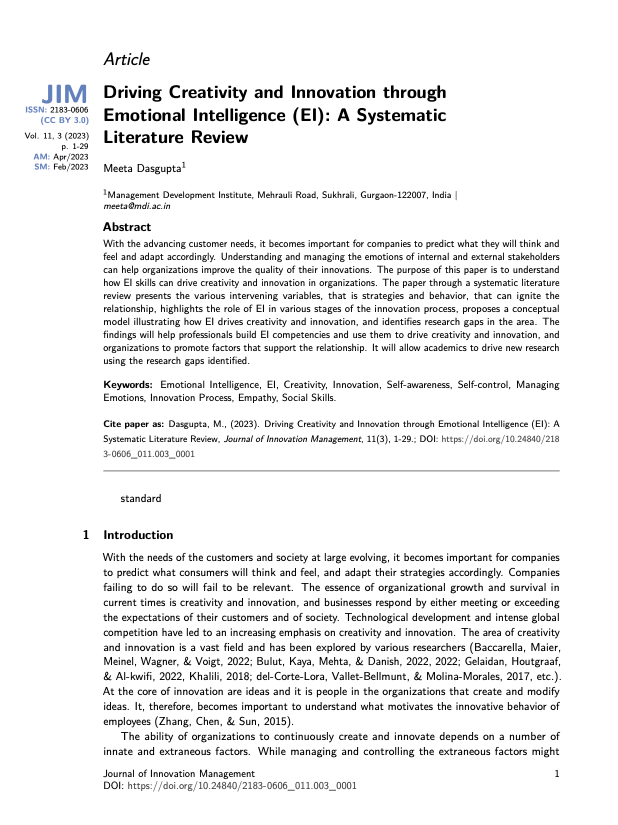Driving Creativity and Innovation through Emotional Intelligence (EI): A Systematic Literature Review
Main Article Content
Abstract
The survival of organizations hinges on their response to customer and societal expectations through creativity and innovation. Understanding and managing the emotions of internal and external stakeholders can help organizations improve the quality of their innovations. With the evolving needs of the customers and society, it becomes important for companies to predict what consumers will think and feel and adapt their strategies accordingly. An absence of a systematic literature review converging the two fields of emotional intelligence (EI) and creativity and innovation motivated the current study. The purpose of this paper is to understand how EI skills can drive creativity and innovation in organizations. The paper through a systematic literature review presents the various intervening variables, that is strategies and behavior, that can ignite the relationship. The paper highlights the role of EI in various stages of the innovation process, proposes a conceptual model illustrating how EI drives creativity and innovation, and identifies research gaps in the area. The findings will help professionals build EI competencies and use them to drive creativity and innovation, and organizations to promote factors that support the relationship. It will allow academics to drive new research using the identified research gaps.
Article Details
Authors who publish with this journal agree to the following terms:
- Authors retain copyright and grant the journal right of first publication with the work simultaneously licensed under a Creative Commons Attribution License that allows others to share the work with an acknowledgement of the work's authorship and initial publication in this journal.
- Authors are able to enter into separate, additional contractual arrangements for the non-exclusive distribution of the journal's published version of the work (e.g., post it to an institutional repository or publish it in a book), with an acknowledgement of its initial publication in this journal.
- Authors are permitted and encouraged to post their work online (e.g., in institutional repositories or on their website) prior to and during the submission process, as it can lead to productive exchanges, as well as earlier and greater citation of published work (See The Effect of Open Access).

